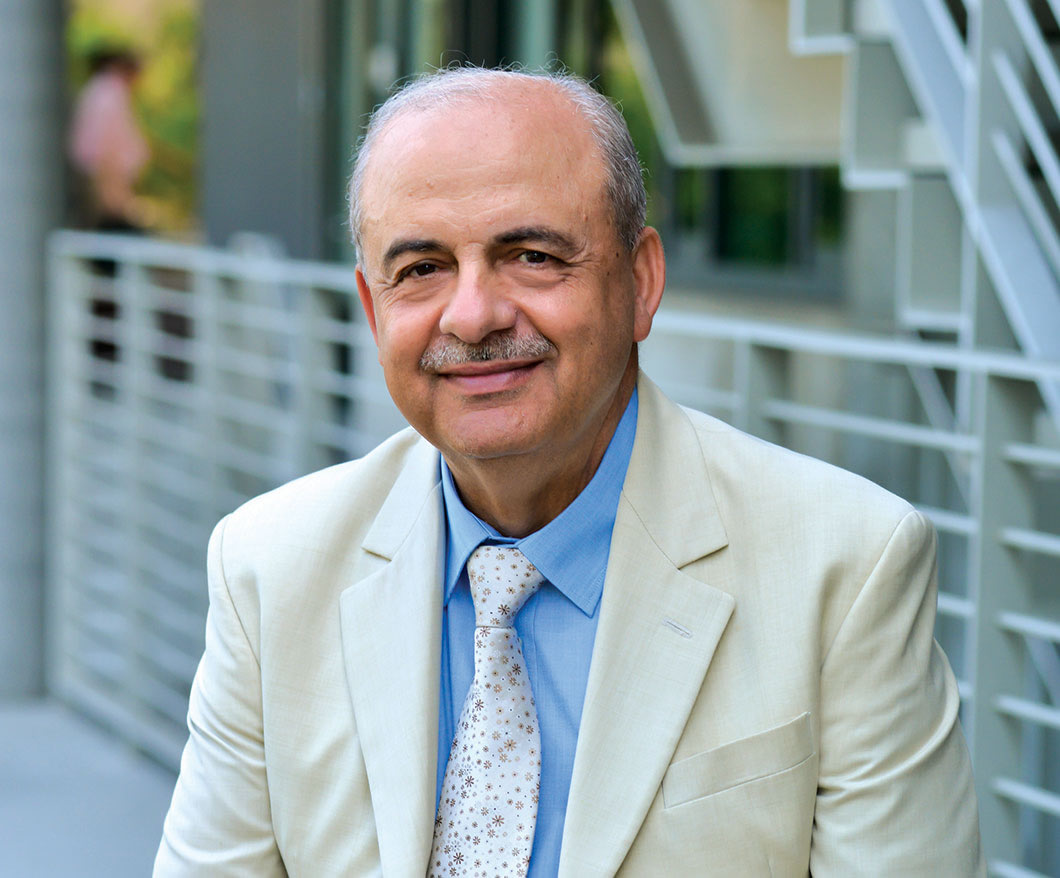Faculty
Key Contribution
Fellowship brings cybersecurity expert displaced from war-torn Syria to Harvey Mudd
When the Syrian civil war arrived at his doorstep, Ahmad Adib Sha’ar knew it was time to leave.
His departure brought him to the U.S. and, ultimately, to a visiting professorship at Harvey Mudd College, where Sha’ar will teach at least one course within the realm of cryptography, programming algorithms, information theory and radar theory. He also will continue his groundbreaking research into prime codes and the wireless communication technique known as code division multiple access (CDMA). Sha’ar has wasted no time settling into his new academic environment.

Already, Sha’ar, who is visiting under the Institute of International Education’s Scholar Rescue Fund, has lectured on his departure from Syria and the circuitous route he took to avoid ISIS as well as a longstanding primary research interest: the application of CDMA to radar. His stay, which will continue through the 2016–2017 academic year, involves lecturing to students and assisting them with their own research.
“My plan was to retire in my traditional house in Aleppo,” says Sha’ar, who left Syria with his wife, Sawsan, and two sons (five children preceded them in leaving). “I did not anticipate the violence and destruction that would prevent me from fulfilling that dream.”
Indeed, the war has cost him dearly. Not only was he forced from his home when his family’s safety was threatened and utility services became scarce, but his brother was killed in a rocket attack.
Born in Aleppo, Sha’ar was educated at Kent University in Canterbury, the United Kingdom, where he earned an M.S. degree in digital communications and a PhD in computer networks. He returned to the Middle East, where he joined the academic staff at Assad Academy of Military Engineering and Mamoun Private University for Science and Technology, both in Syria, and King Khaled University in Saudi Arabia. In the early 1980s, he co-invented prime sequencing codes for fiber optics, later applying them to radar and collision engineering algorithms, and co-authored a definitive paper titled “A survey of one-coincidence sequences for frequency-hopped spread-spectrum systems,” which describes the methods of primary code sequences designed to minimize channel interference from multiple users.
“I’ve always had an interest in solving big things; however, I have some difficulty dealing with smaller things,” says Sha’ar. With a chuckle, the wireless communication protocol authority offered a paradoxical example: “For instance, my 17-year-old son is better than I am at understanding mobile phone instructions.”
Upon arriving in the U.S. through a Scholar Rescue Fund fellowship, Sha’ar worked as a visiting professor at Salisbury University in Maryland, teaching a course on codes in communications and computer systems. IIE-SRF fellowships enable outstanding professors, researchers and public intellectuals from countries in turmoil to pursue their academic work in safety and to continue to share their knowledge with students, colleagues and the community. When the position at Salisbury ended, Sha’ar looked toward Harvey Mudd College, which by then seemed as far away as possible from the fighting in Syria.
“There was no water, no electricity, no Internet and, most important, no security in Aleppo,” says Sha’ar, who once narrowly escaped a rocket attack. “My children were protesting against the government, and I knew it was too dangerous to stay.”
Physics/engineering alumnus and HMC Board of Trustees member Mahesh Kotecha ’70, who introduced the College to the Rescue Scholars program, another trustee and a third donor helped to fund the Sha’ars stay. In Claremont, the Sha’ars are happy, settled and enjoying the charm of the community and Southern California. Sha’ar already is immersed in his work: Typically used in cellular and other telecommunications networks, CDMA had not previously been applied to fiber optics. An ongoing challenge remains radar.
“When we began our work, there was no existing scientific effort to apply CDMA to radars,” he says. “In fact, nobody put such a challenge in front of me. I fabricated this challenge, and we solved it by recommending the use of our fiber optic CDMA-modified prime codes to radars in order to control the pulse repetition interval agility of a set of adjacent radars. We demonstrated algebraically the effectiveness of the suggested code sets.”
Sha’ar now has a new challenge that he’s embracing wholeheartedly.
“Harvey Mudd College has some really talented students,” he says. “As I begin my time here, I can’t think of anything I’m more looking forward to doing than sharing my knowledge with them.”